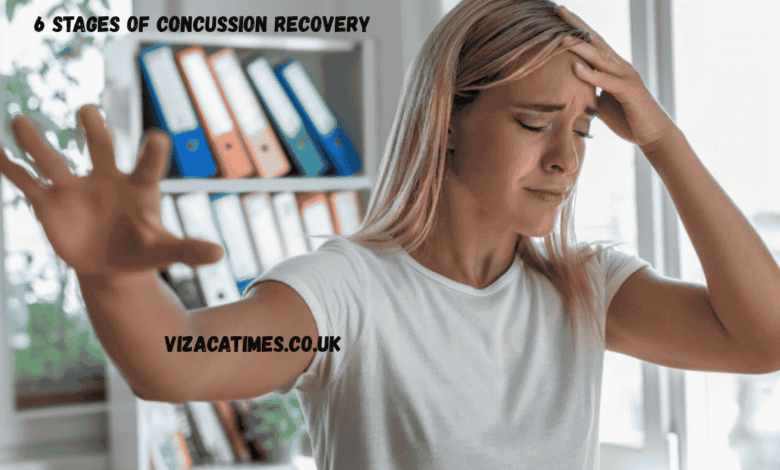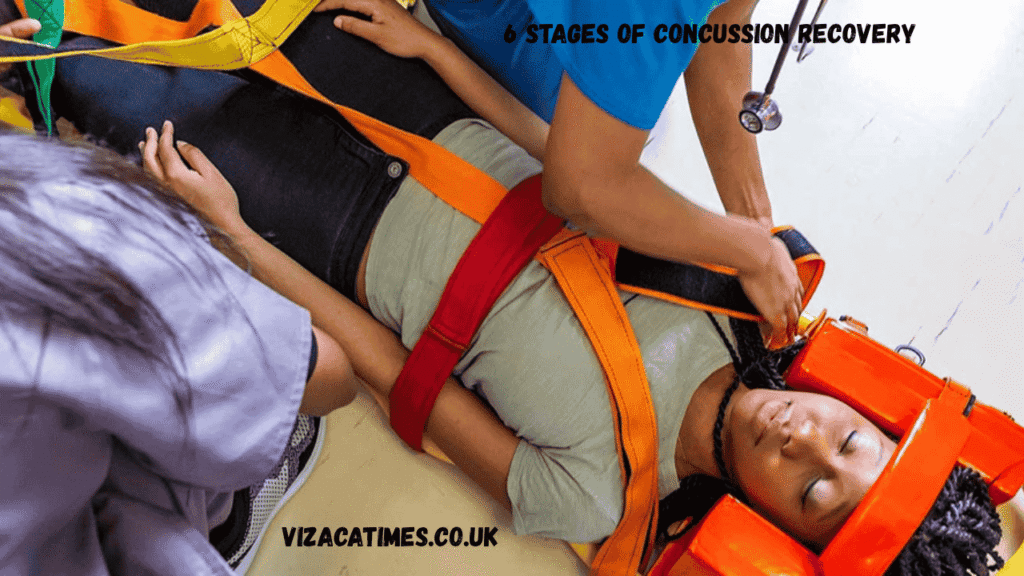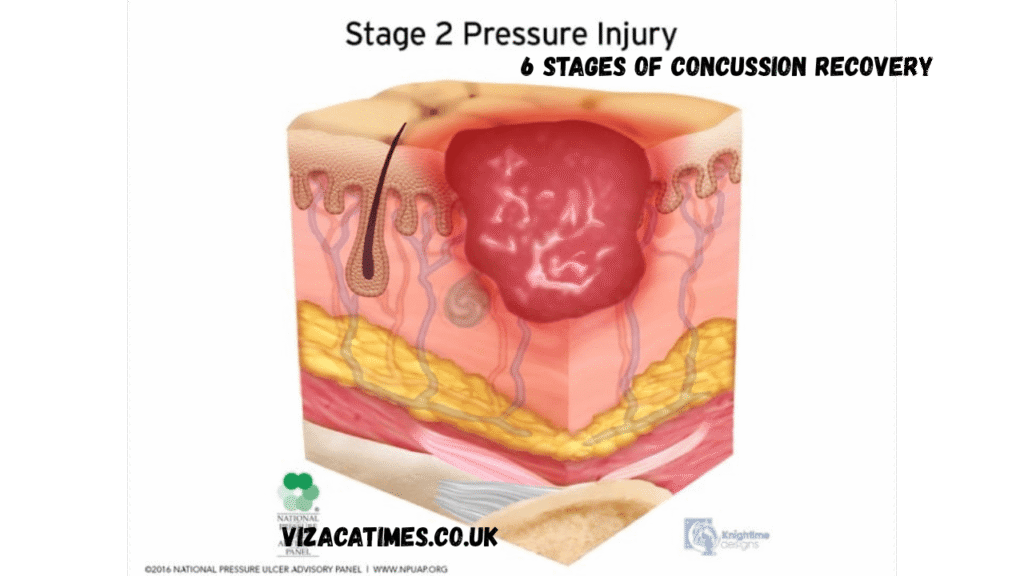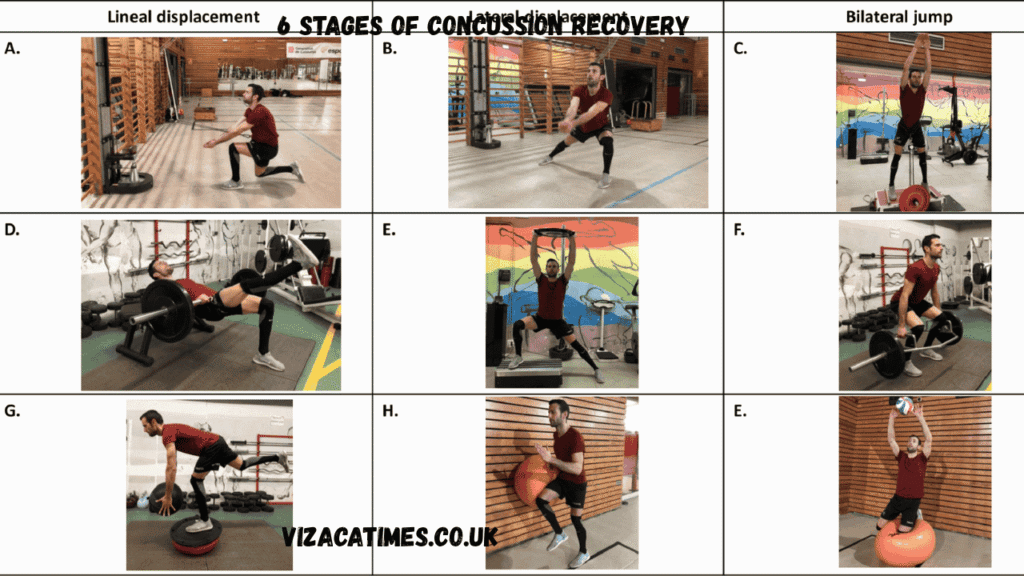6 Stages of Concussion Recovery: Understanding the Phases, Symptoms, and Healing Timeline

Introduction: Why Knowing the 6 Stages of Concussion Recovery Matters
Recovering from a concussion isn’t just about waiting for the pain to go away. A concussion is a mild traumatic brain injury that can affect a person’s cognitive, physical, emotional, and behavioral functions. Because symptoms can vary and evolve over time, understanding the 6 stages of concussion recovery helps patients, caregivers, and medical professionals navigate the healing process more effectively. From the initial trauma to the return of full functionality, each stage serves a purpose in the brain’s journey back to balance.
This article breaks down each of the 6 stages of concussion recovery, exploring what happens during each phase, what symptoms may arise, and how to support the recovery process safely and effectively.
Stage 1: Acute Injury – The Immediate Aftermath

The first of the 6 stages of concussion recovery begins the moment the injury occurs. This is often referred to as the acute stage, where the impact to the head causes the brain to shake within the skull, potentially damaging brain cells and disrupting normal neurological function.
What Happens:
Within minutes to hours of the injury, the individual may experience dizziness, confusion, headache, nausea, sensitivity to light or noise, or even temporary loss of consciousness. Not all symptoms appear right away; some might be delayed by several hours.
Care Focus:
Immediate medical assessment is crucial. The individual should stop all physical activity, avoid screen time, and rest in a quiet environment. At this point, cognitive and physical rest is the main prescription.
Stage 2: Post-Injury Rest and Symptom Monitoring

After the initial injury, the brain enters a vulnerable period. This stage is dominated by rest and observation to allow the brain to stabilize.
What Happens:
During this phase, which may last for 24–72 hours, symptoms may peak or become more noticeable. Individuals often report fatigue, fogginess, trouble concentrating, and irritability. Emotional disturbances like anxiety or mood swings may also occur.
Care Focus:
Physical and cognitive rest are still the priorities. However, complete inactivity isn’t always ideal. Doctors may recommend limited mental stimulation and light activity if symptoms allow. Monitoring changes in symptoms is essential, and red flags like worsening headaches, repeated vomiting, or changes in consciousness should prompt immediate re-evaluation.
Stage 3: Gradual Reintroduction of Activity

The third stage of the 6 stages of concussion recovery involves cautiously reintroducing light cognitive and physical tasks. This step is often misunderstood but is essential in preventing prolonged inactivity and aiding in neuromuscular coordination.
What Happens:
Around day 3 to 7 post-injury, patients may notice improvements. Headaches and dizziness may start to fade, but concentration issues and mental fatigue could linger.
Care Focus:
Under medical supervision, individuals may begin light aerobic activity (e.g., walking) and engage in low-stress cognitive work like reading or simple problem-solving. It’s important to pace oneself—activities should not worsen symptoms. If they do, the activity should be scaled back.
Stage 4: Return to School or Work (Cognitive Reintegration)
In the fourth stage, the focus shifts to mental reintegration—resuming school, work, or daily life functions without triggering symptoms.
What Happens:
Most patients can tolerate increased mental loads, though full endurance may not have returned. Tasks that require sustained attention, multitasking, or decision-making might still lead to mental fatigue or irritability.
Care Focus:
This stage often includes a modified schedule—shortened workdays, extra breaks, or reduced screen time. Communication with teachers or employers is essential to create supportive environments. Stress management, hydration, and proper sleep hygiene are especially critical.
Stage 5: Return to Physical Activity (Physical Reintegration)
Stage five of the 6 stages of concussion recovery focuses on getting back to normal physical routines, including exercise and sports participation, in a progressive and symptom-free manner.
What Happens:
Physical stamina starts to return. Individuals may feel “almost normal,” but it’s still essential to be cautious. Engaging in contact sports or strenuous activity too early can risk second impact syndrome, which is potentially fatal.
Care Focus:
A step-by-step return-to-play protocol should be followed under medical guidance. This includes activities like jogging, non-contact training drills, and full practice before returning to actual competition. The person should remain symptom-free at each level for at least 24 hours before progressing to the next.
Stage 6: Full Recovery – Return to Normal Life
The final stage is full recovery, where the patient has returned to pre-injury levels of physical and cognitive performance, and all symptoms have subsided.
What Happens:
In this phase, most people can resume all aspects of their daily life without any limitations or residual symptoms. However, it’s important to remember that recovery times vary. Some people may reach this stage in a week, while others may need several weeks or even months.
Care Focus:
Continue with healthy lifestyle habits, avoid risky activities that may lead to another head injury, and stay alert for any signs of recurrence. In some cases, individuals may experience post-concussion syndrome, where symptoms linger for longer than expected. This would require further medical attention and possibly neuropsychological support.
Important Factors That Affect the 6 Stages of Concussion Recovery
While the 6 stages of concussion recovery provide a general framework, several individual factors can influence the speed and effectiveness of recovery:
- Age: Younger individuals may take longer to recover.
- History of Previous Concussions: Multiple concussions can slow down recovery.
- Severity of Injury: A stronger impact often requires longer recovery.
- Immediate Response: Early rest and medical care can improve outcomes.
- Mental Health: Stress, anxiety, or depression may complicate recovery.
Recognizing When Recovery Isn’t Going as Planned
If recovery doesn’t follow the typical path or if symptoms persist beyond 3–4 weeks, it may indicate post-concussion syndrome. In such cases, a multidisciplinary approach—neurologists, physical therapists, psychologists—might be necessary to address lingering issues.
Symptoms like memory lapses, chronic headaches, vision problems, or balance issues need deeper assessment. It’s also important not to rush through the 6 stages of concussion recovery, especially if there is pressure from work or athletics. Healing the brain is not something to be fast-tracked.
Conclusion: Patience and Awareness Are Key
The 6 stages of concussion recovery offer a structured way to understand how the brain heals after injury. While each phase serves a unique role in the recovery process, the path is not always linear. Some may breeze through the early stages but stall in later ones, while others may need extended rest before returning to normal.
Recognizing the symptoms, listening to your body, and seeking professional guidance are crucial. With the right care and patience, full recovery is not only possible but expected for the majority of individuals.
Also Read : Doctorhub360.com Neurological Diseases: Your Comprehensive Guide to Brain Health



